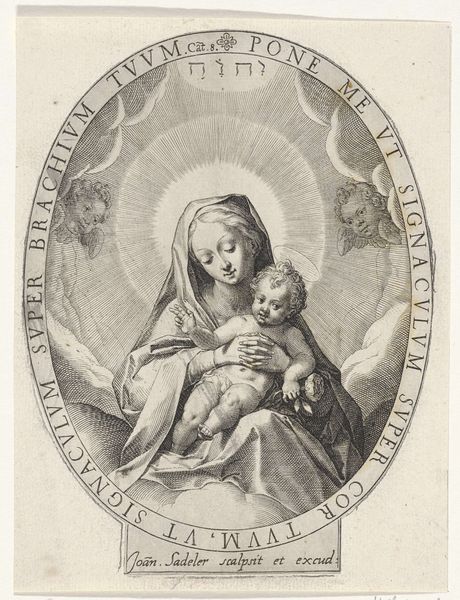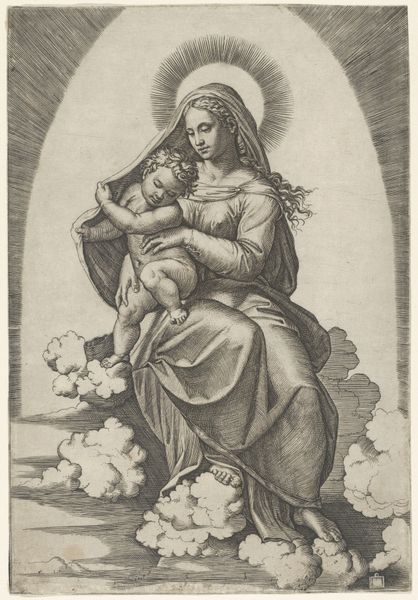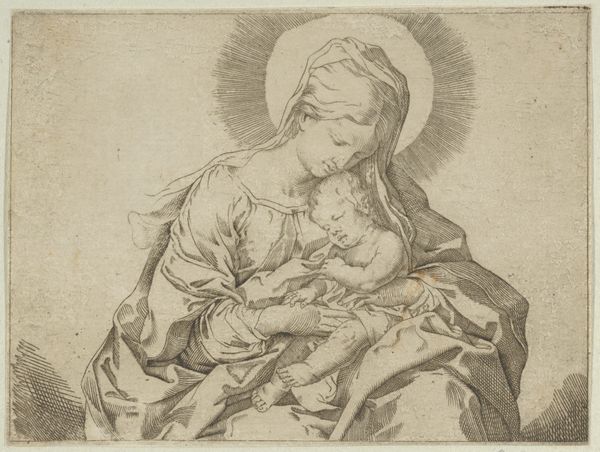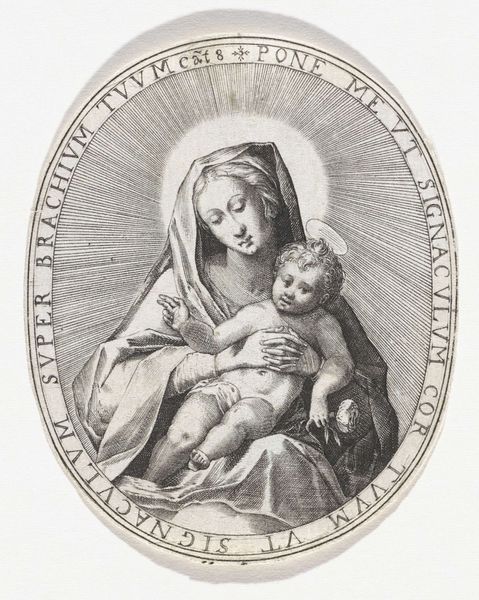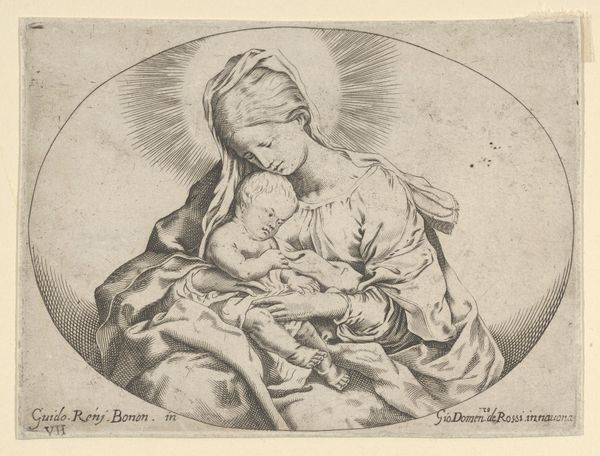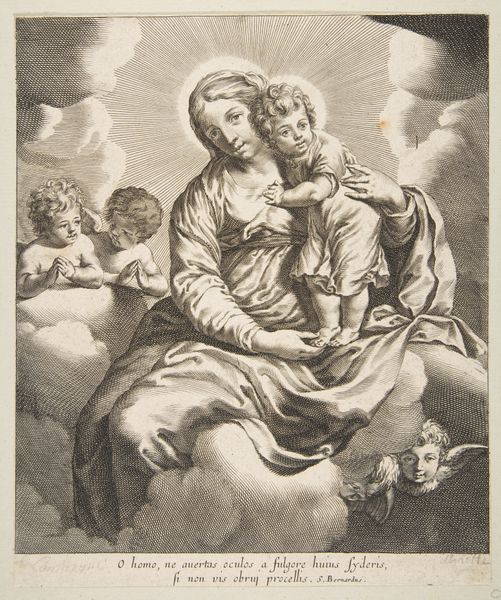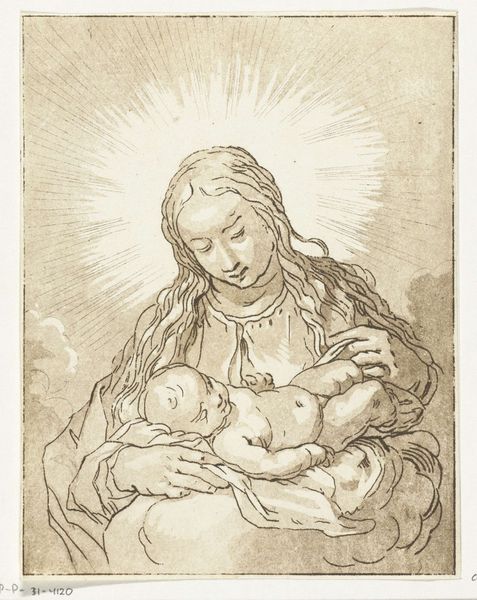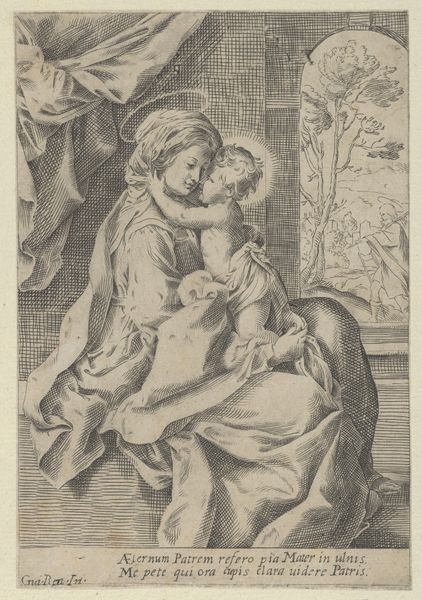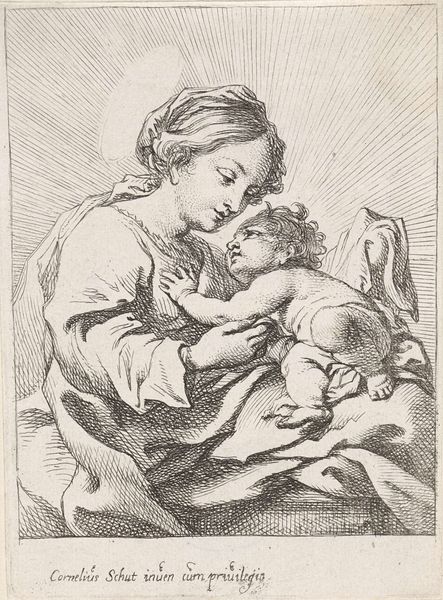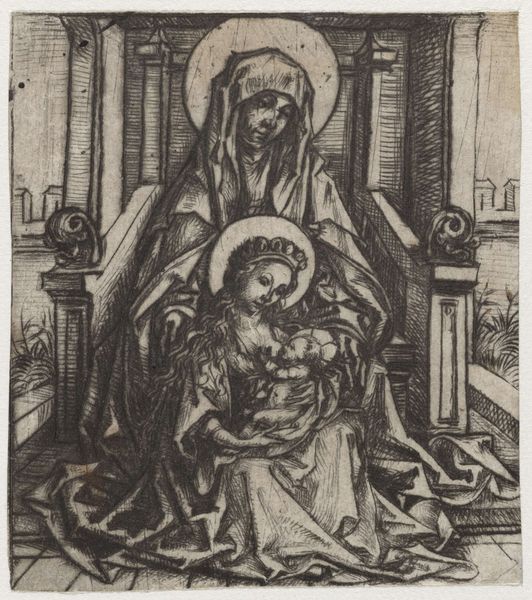
print, engraving
#
baroque
# print
#
landscape
#
figuration
#
history-painting
#
engraving
Dimensions: 7 x 5 11/16 in. (17.78 x 14.45 cm) (image, oval)
Copyright: Public Domain
Bartolomeo Coriolano created this image of the Madonna and Child using a chiaroscuro woodcut, a printmaking technique employing multiple wood blocks to create contrasting light and dark areas. The materiality of the wood itself is key to understanding this image. Coriolano would have used a knife or gouge to carve away areas of the block, leaving a raised surface to receive the ink. The texture of the wood grain subtly influences the final print, adding depth and visual interest. The process required immense skill and patience, demanding precise cuts and careful alignment of each block to achieve the desired effect. This wasn't merely a reproductive process. It was a translation, demanding artistic interpretation at every stage. The very act of carving, layering, and printing imbues the image with a unique character that separates it from painting, and indeed from other prints. This is not just an image, but a material performance.
Comments
minneapolisinstituteofart almost 2 years ago
⋮
The Virgin Mary was highly venerated in Counter-Reformation Italy, partly due to Protestant reformers' cries that she had become too prominent in the Church. Depictions of the Madonna were never more popular, and Ricci, in turn, promoted them in China. Guido Reni was one of the great masters of Marian imagery. His intimate portrayal of Mother and Child typifies the subject's appeal for the Chinese. It not only presented a warm, accessible vision of God, but also brought to mind the beloved Buddhist deity Kuan-yin. In fact, the Jesuits' promotion of the Madonna in China is thought to have influenced the version of Kuan-yin popular in the 16th and 17th centuries, which shows her holding an infant son.
Join the conversation
Join millions of artists and users on Artera today and experience the ultimate creative platform.


